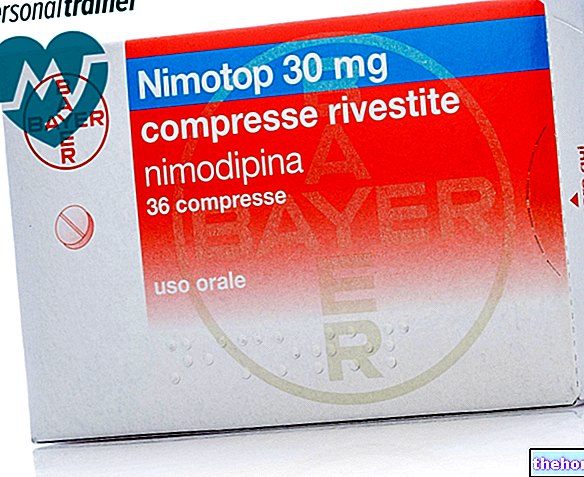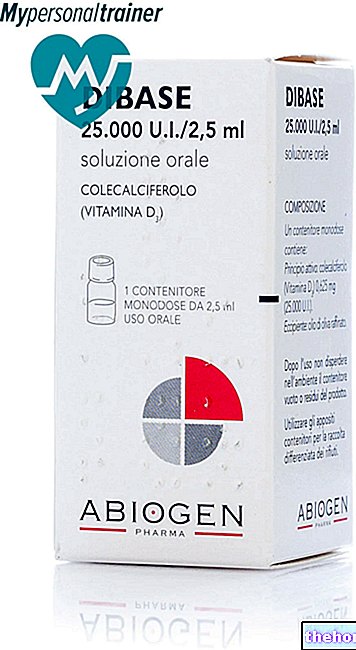Active ingredients: Tapentadol
Palexia 50 mg film-coated tablets
Palexia 75 mg film-coated tablets
Palexia 100 mg film-coated tablets
Palexia package inserts are available for packs: - Palexia 50 mg film-coated tablets, Palexia 75 mg film-coated tablets, Palexia 100 mg film-coated tablets
- Palexia 50 mg prolonged-release tablets, Palexia 100 mg prolonged-release tablets, Palexia 150 mg prolonged-release tablets, Palexia 200 mg prolonged-release tablets, Palexia 250 mg prolonged-release tablets
- Palexia 25 mg prolonged-release tablets
Indications Why is Palexia used? What is it for?
Tapentadol, the active substance in Palexia is a strong pain reliever derived from the opioid class Palexia is used for the treatment of moderate to severe acute pain in adults who can only be adequately treated with opioid pain relievers
Contraindications When Palexia should not be used
Do not use Palexia
- If you are allergic to tapentadol or any of the other ingredients of this drug
- if you have asthma or if your breathing is dangerously slow or shallow (respiratory depression, hypercapnia)
- If you have intestinal paralysis
- if you have acute poisoning with alcohol, sleeping medicines, pain relievers or other psychotropic medicines (medicines that affect "mood and emotions) (see" Other medicines and Palexia ")
Precautions for use What you need to know before taking Palexia
Talk to your doctor or pharmacist before taking Palexia:
- if you have shortness of breath or weakness,
- if you suffer from increased pressure in the head or disturbances of consciousness, up to coma,
- if you have had a head injury or a brain tumor,
- if you have had a seizure or if the risk of a seizure is increased,
- if you have liver or kidney problems (see "How to use Palexia),
- if you suffer from pancreatic or biliary tract disorders, including pancreatitis,
- if you are taking medicines called opioid agonists / antagonists (such as pentazocine, nalbuphine) or medicines that are partially agonist mu-opioid receptors (such as buprenorphine).
Palexia can lead to physical and psychological tolerance. If you have a tendency to abuse drugs or are drug dependent, you should only take this drug for short periods of time and under close medical supervision
Interactions Which drugs or foods can modify the effect of Palexia
Tell your doctor or pharmacist if you are taking, or have recently taken, any other medicines.
Your breathing may become dangerously short or weaker (respiratory depression) if you are taking certain sleeping medications or tranquilizers (such as barbiturates, benzodiazepines), or pain relievers such as morphine and codeine (also in cough preparations) in combination with Palexia. In this case, please inform your doctor.
If you are taking certain CNS depressant medicines (such as benzodiazepines, antipsychotics, H1 antihistamines, opioids, alcohol) in combination with Palexia, your level of consciousness may decrease and you may feel sleepy or faint. If this happens, tell your doctor.
Serotonin syndrome is a rare and dangerous condition that has been reported in some patients who have taken tapentadol in combination with drugs called serotonergics (such as certain drugs to treat depression). Symptoms of serotonin syndrome can be, for example, confusion, restlessness, fever, sweating, incoordinated movements of the limbs or eyes, uncontrollable shaking of the muscles, myoclonus and diarrhea. Your doctor will be able to inform you of this.
Taking Palexia with other types of drugs referred to as μ-agonists / antagonists (such as pentazocine, nalbuphine) or partial μ-opioid agonists (such as buprenorphine) has not been studied. Palexia may not be effective if taken together with one of these medicines Tell your doctor if you are taking any of these medicines.
Taking Palexia together with certain drugs (such as rifampicin, phenobarbital, St. John's wort), strong inhibitors or inducers of certain enzymes that are needed to eliminate tapentadol from the body, can affect the effectiveness of tapentadol and can cause side effects , especially at the beginning or at the end of therapy with these drugs. Keep your doctor informed of any medications you are taking.
Palexia should not be taken together with MAO inhibitors (a type of medicine used to treat depression). Tell your doctor if you are taking MAO inhibitors or have taken them within the past 14 days.
Palexia with food, drink or alcohol
Do not drink alcohol while taking Palexia as some side effects, such as sleepiness, may increase. Food does not affect the effectiveness of this drug.
Warnings It is important to know that:
Pregnancy and breastfeeding
If you are pregnant or breastfeeding, think you may be pregnant or are planning to become pregnant, ask your doctor or pharmacist for advice before using this medicine.
Do not take these tablets:
- if you are pregnant, unless your doctor has instructed you to do so,
- during childbirth because the unborn baby's breathing could slow down or weaken in a dangerous way (respiratory failure),
- during breastfeeding, because the drug may be excreted in the milk.
Driving and using machines:
Palexia can cause drowsiness, dizziness, and blurred vision and can reduce reaction time. This can especially happen when you start Palexia therapy, when your doctor changes your dose, or when you drink alcohol or take tranquilizers. Ask your doctor if you can drive a car or use machines.
Palexia contains lactose
If you have been told by your doctor that you have "intolerance to some sugars, contact your doctor before taking this medicinal product.
Dose, Method and Time of Administration How to use Palexia: Posology
Always take this medication exactly as your doctor or pharmacist has told you. If in doubt, consult your doctor or pharmacist. Your doctor will decide the dosage based on the intensity of the pain and your personal sensitivity to pain. In general, the lowest dose that can relieve pain should be used.
Adults
The usual dose is 1 tablet every 4-6 hours.
Daily doses of Palexia greater than 700 mg of tapentadol during the first day of therapy and greater than 600 mg of tapentadol in the following days are not recommended. Your doctor may prescribe a different or more appropriate strength or interval between doses if necessary. If it seems to you that the effect of these tablets is too strong or too weak, consult your doctor or pharmacist.
Senior citizens
In the elderly (over 65 years) there is usually no need to adjust the dosage. However, the excretion of tapentadol may be slowed down in some patients in this group. If this applies to you, your doctor may prescribe a different dosage.
Liver and kidney disorders (failure)
Patients with severe liver problems cannot take these tablets. If you have mild liver or kidney problems, your doctor will prescribe a different strength. In case of mild liver problems, there is no need to change the normal dosage.
Patients with severe kidney problems should not take these tablets. If you have mild or moderate kidney problems, your doctor will recommend a different dosage
Use in children and adolescents
Palexia is not suitable for children and adolescents under the age of 18.
How and when to take Palexia
Palexia is for oral use. Always swallow the tablets with sufficient fluid. You can take the tablets on an empty stomach or with a meal.
Duration of treatment
Do not take the tablets for longer than your doctor has told you
Overdose What to do if you have taken too much Palexia
If you take more Palexia than you should:
After taking very high doses, the following may occur:
- pinched pupils, vomiting, drop in blood pressure, fast heartbeat, disturbed consciousness or coma (profound unconsciousness), seizures, difficulty in breathing up to respiratory arrest.
In this case, call your doctor immediately.
If you forget to take Palexia
If you forget to take the tablets, the pain is likely to return. Do not double the dosage to make up for this forgetfulness, just continue taking the tablets as before.
If you stop taking Palexia
If you stop or stop treatment too soon, the pain is likely to return. If you wish to stop treatment due to side effects, please consult your doctor.
There is usually no withdrawal effect when the treatment is ended, however in rare cases people who have taken the tablets for some time may feel unwell if they stop abruptly. Symptoms could be:
- nervousness, watery eyes, runny nose, yawning, chills, muscle pain and dilated pupils,
- irritability, anxiety, back pain, joint pain, weakness, abdominal cramps, difficulty sleeping, nausea, loss of appetite, vomiting, diarrhea and increased blood pressure, breathing or heart rate
If you experience any of these symptoms after stopping therapy, please consult your doctor. You should not suddenly stop taking this drug, unless your doctor has told you otherwise. If your doctor makes you stop taking the tablets, he will also tell you how to do this and this may include a gradual reduction in doses.
If you have any further questions on the use of this drug, ask your doctor or pharmacist
Side Effects What are the side effects of Palexia
Like all medicines, this medicine can cause side effects, although not everybody gets them.
Serious side effects or symptoms to look out for and what to do if they occur:
this drug can cause allergic reactions. Symptoms may be wheezing, difficulty in breathing, swelling of the eyelids, face or lips, rash or itching, especially of the whole body. Another serious side effect is slower breathing or more shortness of breath than expected. This occurs mainly in elderly or weak patients. In these cases, contact your doctor immediately.
Other possible side effects are
Very common (may affect more than 1 in 10 people). Nausea, vomiting, dizziness, drowsiness, headache.
Common (may affect up to 1 in 10 people): decreased appetite, anxiety, confusion, hallucinations, sleep disturbances, strange dreams, tremors, flushing, constipation, diarrhea, indigestion, dry mouth, itching, increased sweating, rash, muscle cramps, feelings of weakness, fatigue, sensation of temperature changes.
Uncommon (may affect up to 1 in 100 people): depression, disorientation, excitability (agitation), nervousness, restlessness, euphoria, disturbance in attention, impaired memory, fainting, sedation, difficulty in controlling movements, difficulty in speech, numbness, abnormal skin sensations (e.g. tingling, pricking), involuntary muscle contractions, distorted vision, increased heart rate, palpitations, low blood pressure, dangerous slowing of breathing or shortness of breath (respiratory depression), decreased oxygen in the blood, slowed breathing, slowed breathing, abdominal discomfort, hives, heaviness, difficulty urinating, increased frequency to urinate, withdrawal syndrome (see "if you stop taking Palexia", accumulation of water in the tissues (edema), strange sensations, feeling of thirst, irritability, feeling of relaxation.
Rare (may affect up to 1 in 1000 people): allergic reactions to the drug, including edema under the skin, and hives and in severe cases, difficulty in breathing, drop in blood pressure, collapse or shock), strange thoughts, seizures , decreased level of consciousness, abnormal coordination, slow heart rate, gastric emptying problems.
Generally, the possibility of having suicidal thoughts or behaviors increases in patients suffering from chronic pain. In addition, some drugs for the treatment of depression (which therefore have an impact on the brain neuorotransmission system) may increase this risk, especially at the start of therapy. Although tapentadol acts on neutrotransmission, data from the clinical use of tapentadol do not demonstrate a increased risk.
If you get any side effects, please tell your doctor or pharmacist. This includes all possible side effects not listed in this leaflet. You can also report side effects directly by completing the citizen form which you can find on the Italian Medicines Agency website - Adverse Reaction Reporting Section http: //www.agenziafarmaco.gov.it or by talking to your doctor or pharmacist By reporting side effects you can help provide more information on the safety of this medicine.
Expiry and Retention
Keep this medicine out of the sight and reach of children.
Do not use this medicine after the expiry date which is stated on the carton and blister. The expiry date refers to the last day of the month indicated.
This drug does not require special storage conditions.
Medicines should not be disposed of via wastewater or household waste. Ask your pharmacist how to dispose of unused medication. These measures help to preserve the environment.
Contents of the pack and other information
What Palexia contains
The active ingredient is: tapentadol
Each tablet contains 50 mg of tapentadol (as hydrochloride)
Each tablet contains 75 mg of tapentadol (as hydrochloride)
Each tablet contains 100 mg of tapentadol (as hydrochloride)
[50 mg]:
Tablet core: microcrystalline cellulose, lactose monohydrate, sodium caramelose, povidone K30, magnesium stearate. Tablet coating: polyvinyl alcohol, titanium dioxide, macrogol 3350, talc
[75 mg]:
Tablet core: microcrystalline cellulose, lactose monohydrate, sodium caramelose, povidone K30, magnesium stearate. Tablet coating: polyvinyl alcohol, titanium dioxide, macrogol 3350, talc, yellow iron oxide (E172), red iron oxide (E172)
[100 mg]:
Tablet core: microcrystalline cellulose, lactose monohydrate, sodium caramelose, povidone K30, magnesium stearate. Tablet coating: polyvinyl alcohol, titanium dioxide, macrogol 3350, talc, yellow iron oxide (E172), red iron oxide (E172), black iron oxide (E172)
Description of the appearance of Palexia and contents of the pack
[50 mg]: White, round shaped, film-coated tablets with a diameter of 7 mm, marked with the Grünenthal logo on one side and "H6" on the other.
[75 mg]: light yellow, round shaped, film-coated tablets with a diameter of 8 mm), marked with the Grünenthal logo on one side and "H7" on the other.
[100 mg]: light pink, round shaped, film-coated tablets with a diameter of 9 mm, marked with the Grünenthal logo on one side and "H8" on the other.
Palexia prolonged-release tablets are packed in blisters, in packs of 5, 10, 10x1, 14, 14x1, 20, 20x1, 24, 28, 28x1, 30, 30x1, 40, 40x1, 50, 50x1, 54, 56, 56x1 , 60, 60x1, 90, 90x1, 100 and 100x1 tablets.
(Not all packs can be marketed)
Source Package Leaflet: AIFA (Italian Medicines Agency). Content published in January 2016. The information present may not be up-to-date.
To have access to the most up-to-date version, it is advisable to access the AIFA (Italian Medicines Agency) website. Disclaimer and useful information.























-nelle-carni-di-maiale.jpg)




